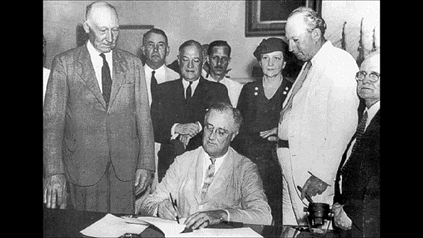Laxmikanth Summary: Historical Development of the Constitution of India | Indian Polity for UPSC CSE PDF Download
Table Of Contents
- Historical Development of constitution of India
- Timeline of British rule in India
- Important Acts Passed during British India and their Provinces
- Rule in India (1773-1858)
- Rule in India (1858-1947)
Historical Development of Constitution of India
During 200 years of British rule in India, various acts were passed to better control this diversified large land under both Company and the Crown rules. These acts greatly influence the country’s present political structure and various constitutional provisions.
Timeline of British Rule in India
1. The Company Rule(1773-1857)
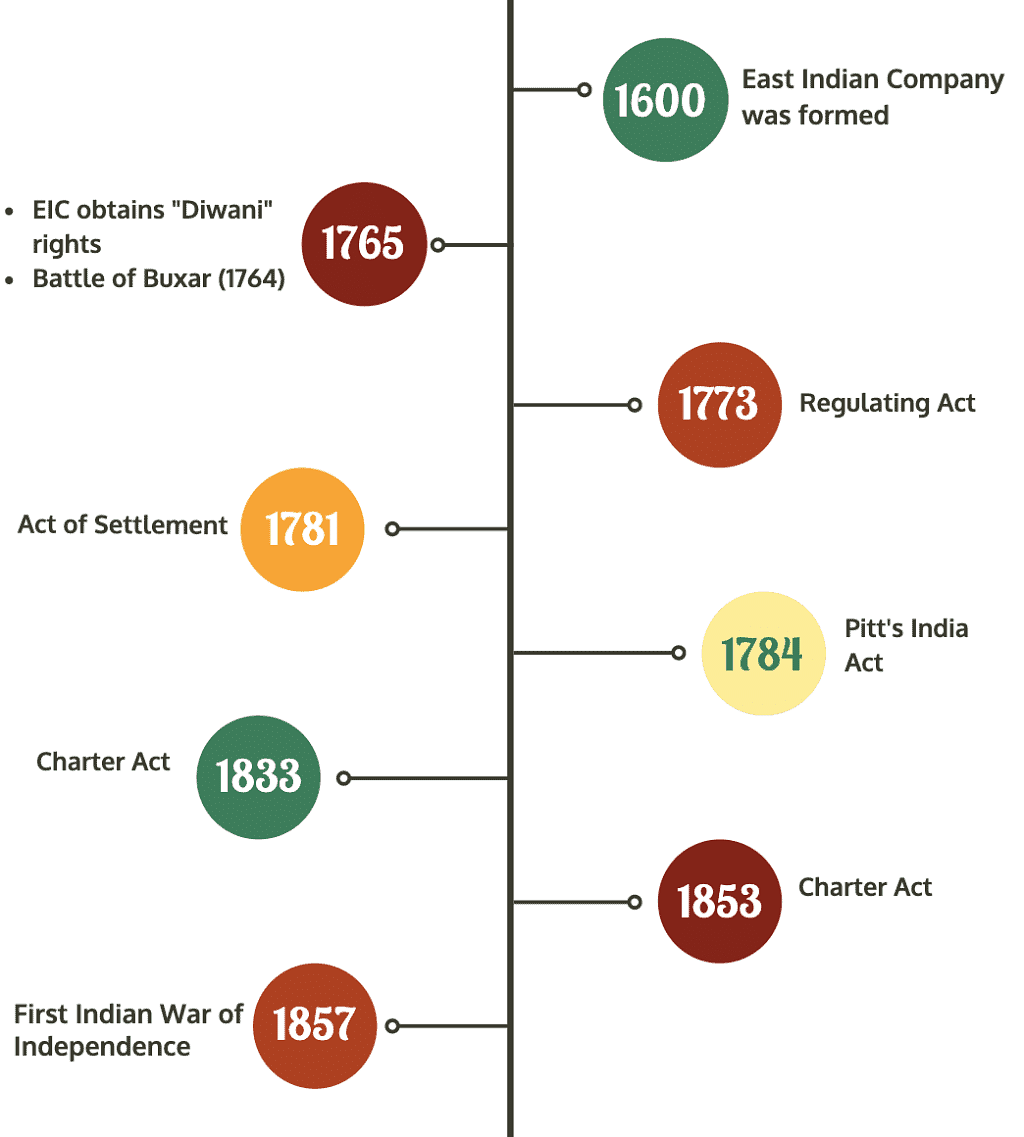 2. The Crown Rule (1858-1947)
2. The Crown Rule (1858-1947)
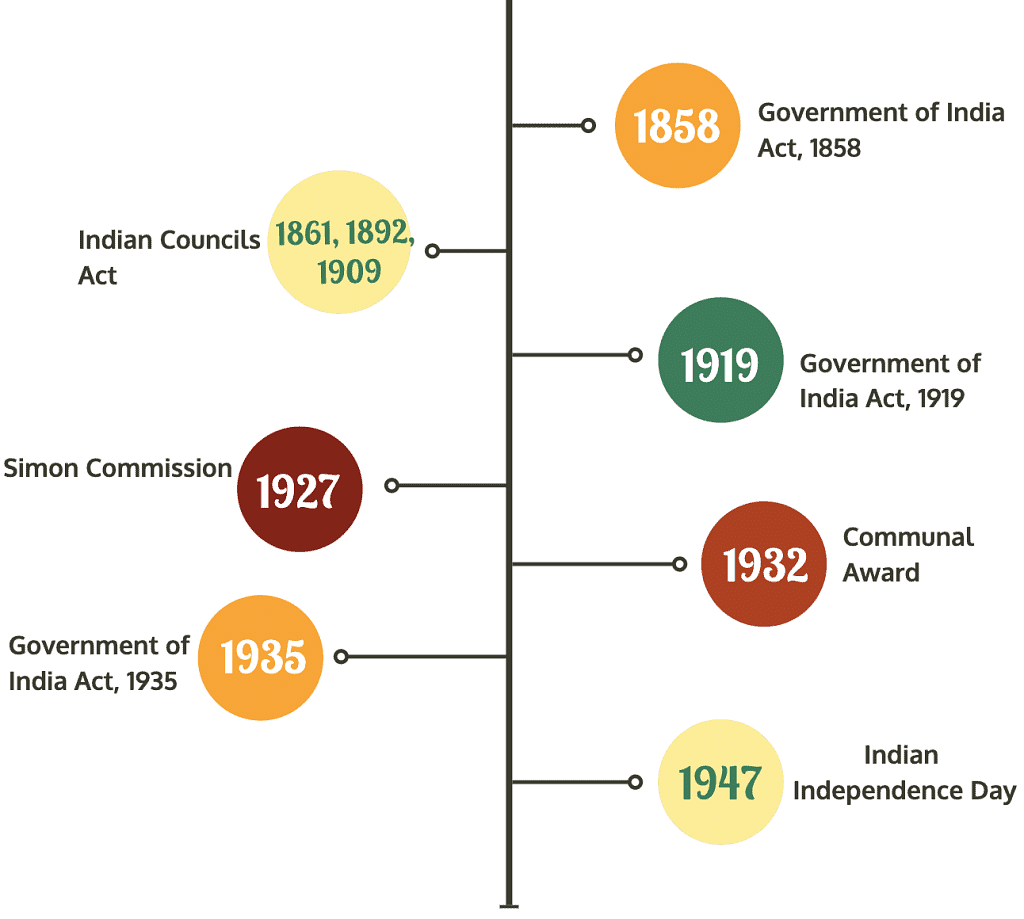
Important Acts passed during British India and their Provisions
Rule in India (1773-1858)
1. Regulating Act, 1773
Features of the Act
- The act was the first attempt to regularize company affairs in India.
- It laid the foundation of Central Administration in India.
- Governor of Bengal became Governor-General of Bengal (Lord Warren Hastings was the first Governor-General of Bengal).
- Created Executive Council of 4 members to assist Governor-General of Bengal.
- Made Governors of Madras and Bombay presidencies subordinate to Governor-General of Bengal.
- Provisioned for setting up the Supreme Court of Calcutta with 1 Chief justice and 3 other judges.
- Prohibited the company's servants from indulging in any private trade and accepting bribes from locals.
- "Provisioned for the Court of Directors of the Company to report to the British Government regarding its revenue, civil, and military affairs in India."

2. Act of Settlement or Amending Act, 1781
Features of the Act
- This act was passed to amend the Regulation Act, 1773.
- Safeguarded the Governor-General and its council from the jurisdiction of the Supreme Court. Also provided immunity to the servants for their official actions.
- Exempted matters related to the Company's revenue from the Supreme Court's jurisdiction.
- Required the Supreme Court to administer the personal law of the defendant.
- Empowered the Governor-General and its Council to frame regulations regarding Provincial Courts and Councils.

3. Pitt’s India Act, 1784
Features of the Act
- Established a system of Dual Government. Provided for the Court of Directors to manage its commercial affairs while a new body called the Board of Control managed its political affairs.
- Empowered the Board of Control to supervise and direct civil and military operations and revenues of India's British possessions.
Significance of the Act
- First time acknowledged Indian Territory under control of the company as India's British possessions.
- The British government became the Supreme Controller of the Company’s affairs and administration in India.

4. Charter Act of 1793
- The Act extended the company’s rule over the British territories in India.
- It prolonged the company’s trade monopoly in India for an additional 20 years.
- The Act established that the “acquisition of sovereignty by the Crown subjects is on behalf of the Crown and not in its own right,” clearly stating that its political functions were on behalf of the British government.
- The company’s dividends were allowed to be raised to 10%.
- The Governor-General was granted enhanced powers, enabling him to override his council’s decisions under certain circumstances.
- He was also given authority over the governors of Madras and Bombay.
- When the Governor-General was present in Madras or Bombay, he would supersede the governors of Madras and Bombay.

- In the Governor-General’s absence from Bengal, he could appoint a Vice President from among the civilian members of his Council.
- The composition of the Board of Control changed, requiring a President and two junior members, who were not necessarily members of the Privy Council.
- The staff's salaries and the expenses of the Board of Control were now charged to the company.
- After all expenses, the company had to pay the British government Rs.5 Lakhs from the Indian revenue annually.
- Senior company officials were prohibited from leaving India without permission, and doing so would be considered as a resignation.
- The company was granted the authority to issue licenses to individuals and company employees for trading in India, known as ‘privilege’ or ‘country trade,’ which eventually led to shipments of opium to China.
5. Charter Act, 1813
Features of the Act:
- Abolished India's trade monopoly except for trade in tea and trade with China.
- Allowed Christian missionaries to come to India and start their religious awakening in India.
- Authorized Local Governments in India to levy taxes on the people of India.Question for Laxmikanth Summary: Historical Development of the Constitution of IndiaTry yourself:Which of the following act led to the introduction of a Dual System of Government in India?View Solution
6. Charter Act, 1833
Features of the Act
- Made Governor-General of Bengal as the Governor-General of India and vested all civil and military powers (Lord William Bentinck became the first Governor-General of India).
- Empowered Governor-General of India with the exclusive legislative powers of entire British India.
- The Company became a purely administrative body.
7. Charter Act, 1853
Features of the Act- Separated legislative and executive functions of the Governor-General’s Council.
 Governor-General's Council
Governor-General's Council - Provided for a separate 6 members Indian Legislative Council to function as mini parliament.
- Provisioned for open competition system for Indian Civil Services for Indians also.
- Introduced local representation in the Indian (Central) Legislative Council. (out of 6 members, 4 to be appointed by the local governments of Madras, Bombay, Bengal, and Agra)
Rule in India (1858 to 1947)
1. Government of India Act, 1858
- Post-1857 revolt British Government took control over India's entire territory under Company rule. The act is also known as the Act of Good Government of India.
Features of the Act
- Changed the post of Governor-General of India to Viceroy of India and made him the representative of India's British Crown (Lord Canning was the first Viceroy of India).
- Abolished the Board of Control and Court of Directors.
- Created office of Secretary of State for India, vested with complete authority and control over Indian administration.
- Created a 15 member Council of India to assist the Secretary of State for India.

2. Indian Councils Act, 1861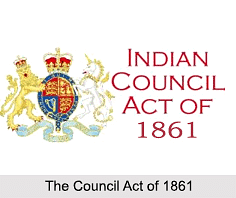
Features of the Act
- Empowered the Viceroy to nominate some Indians as the non-official members under his expanded council (Lord Canning nominated 3 Indians: the Raja of Benaras, the Maharaja of Patiala, and Sir Dinkar Rao).
- Decentralized legislative powers by empowering the Bombay and Madras Presidencies.
- Provided for establishing new legislative councils for Bengal, North-Western Provinces, and Punjab. The act established the Portfolio system in Indian administration. It empowered the Viceroy to make rules and orders for the Council's better functioning and made members of the council in-charge and authorized to issue orders regarding one or more government departments allocated to them.
- Empowered the Viceroy of India to issue ordinances in an emergency without the legislative council's concurrence and with a validity of 6 months.

3. Indian Councils Act, 1892
Features of the Act
- Increased number of non-official members in the Central and Provincial legislative councils.
- Empowered the legislative councils by discussing budget and addressing questions to the executive.
- Provided for the nomination of some non-official members of the:
(i) Central Legislative Council by the viceroy on the Provincial Legislative Councils' recommendation and the Bengal Chamber of Commerce, and that of the Provincial Legislative Councils by the Governors on the district board's recommendation, municipalities, universities, trade associations, zamindars, and chambers.
4. Indian Councils Act, 1909
- Also known as Morley-Minto Reforms.
 Morley-Minto Reforms
Morley-Minto Reforms - The number of members in the Central Legislative Council was increased from 16 to 60, and the number of members in the Provincial Legislative Council was also increased but not uniformly.
- Empowered the members of legislative councils at both levels to ask supplementary questions, move resolutions on the budget, etc.
- Provided for the association of Indians with the executive councils of the Viceroy and Governors (Satyendra Prasanna Sinha was the first Indian to join the Viceroy’s executive council as the Law member).
- Introduced system of communal representation for Muslims and separate electorate for them.
5. Government of India Act, 1919
Features of the Act
- Also known as the Montagu-Chelmsford Reforms.
- Separated Central and Provincial subjects.
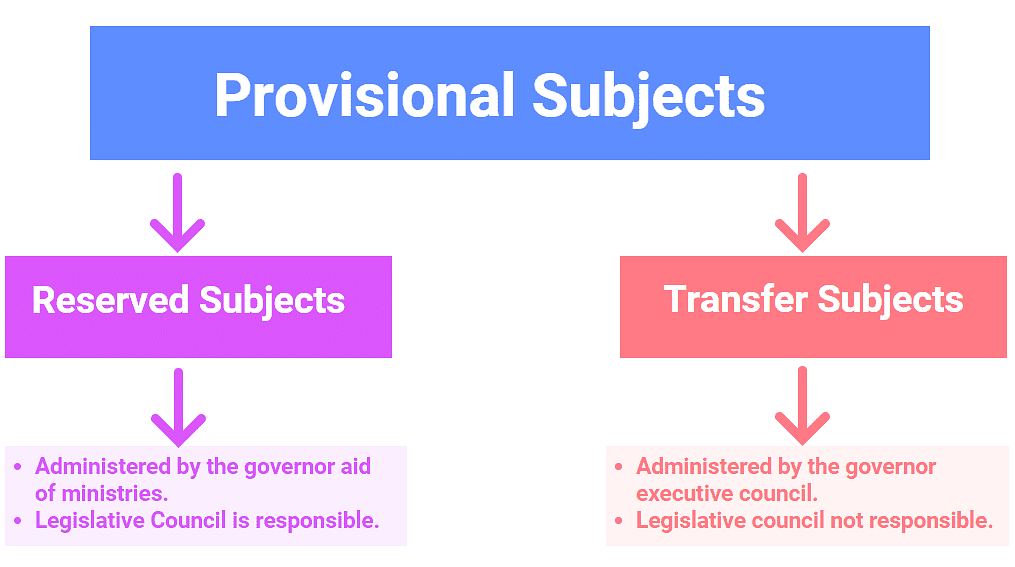 Division of Provisional Subjects
Division of Provisional Subjects
- Provincial subjects were further divided into transferred subjects and reserved subjects. Transferred subjects were to be governed by the Governor with ministers of the legislative council, and Governor's reserved subjects were to be managed by his executive council.
- Introduced bicameralism and direct elections in the country.
- Provided that 3 out of 6 members of the Viceroy’s executive council were to be Indian.
- Provided for separate electorates for Sikhs, Indian Christians, Anglo-Indians, and Europeans.
- Granted the franchise to a limited number of people based on property, tax, or education.
- Created the new office of the High Commissioner for India in London.
- Provided for setting up a Central Service Commission for recruiting civil servants.
- Separated provincial budgets from the Central budget and authorized provincial legislatures to enact their budgets.

Significance of the Act
- This was intended towards a responsible government in British India; the role of elected members in the legislature was advisory, and the Viceroy retained control of the central government.
- Later, with the passage of the Rowlatt Act, the government suppressed the voices of Indians as it empowered the Government to imprison any person without trial and conviction in a court of law.
- The Simon Commission was then appointed in 1927, which was greatly opposed by Indians.
Reason (R): The British Government in defiance of the opinion of all parties in India had deliberately decided to appoint an all British Commission.
6. Government of India Act, 1935
Events leading to Act
- Incorporating the recommendations of the Simon Commission (1930).
- Civil Disobedience Movement (1930).
- Recommendations of Round Table Conferences (1930, 31, and 32).
- Gandhi-Irwin Pact.
- Poona Pact between Gandhi Ji and B.R. Ambedkar (1932).

Features of the Act
- Provided for establishing an All India Federation consisting of provinces and princely states.
- Divided powers into three lists: Federal list (for Centre, with 59 items), Provincial list (for Provinces, with 54 items), and the Concurrent list (for both, with 36 items). The Viceroy was empowered with all the residuary powers.
- Abolished dyarchy in the provinces and introduced provincial autonomy. It introduced responsible Governments in provinces where the Governor needed to work on ministers' advice, responsible to the provincial legislature.
- Provided for the adoption of dyarchy at the Centre. Federal subjects were divided into transferred subjects and reserved subjects.
- Introduced bicameralism in 6 out of 11 provinces (Bengal, Bombay, Madras, Bihar, Assam, and the United Provinces).

- Divided Federal Budget: 80 per cent non-votable part could not be discussed or amended in the legislature. The remaining 20 per cent of the whole budget could be discussed or amended in the Federal Assembly.
- Provisioned for separate electorates for depressed classes (Scheduled Castes), women, and labour. It extended franchise, and about 10 per cent of the total population got voting rights.
- Abolished the Council of India.
- Established Reserve Bank of India to control the country's currency and credit.
- Established Federal Public Service Commission, Provincial Public Service Commission, and Joint Public Service Commission.
- Provided for setting up a Federal Court.
Significance of the Act
- Reflected the ambiguity of British commitment to dominion status for India.
- Discussed nothing about the citizens’ rights.
- There was no major impact on the Governor-General's powers and that of Governors in the provinces.
- Communal electorate further divided Indian society.
- The Constitution so created was rigid, and the power to amend was reserved with the British parliament.
7. Indian Independence Act, 1947
Based on the Muslim league's demands for a separate nation for Muslims, the then Viceroy of India, Lord Mountbatten, put forth the partition plan, known as the Mountbatten Plan. Both Congress and the Muslim League accepted the plan. The Indian Independence Act of 1947 gave immediate effect to the plan.
 Features of the Act
Features of the Act
- Ended British rule in India and declared India to be an independent and sovereign state from August 15, 1947.
- It provisioned for India and Pakistan's partition as two independent dominions with the right to secede from the British Commonwealth.
- It empowered the Constituent Assemblies of the two nations to frame and adopt any constitution of their respective nations and repeal any British Parliament act, including the Independence Act itself.
- It abolished the office of Secretary of State for India and transferred his powers to the Secretary of State for Commonwealth Affairs.
- It deprived the British Monarch of his right to veto bills or ask for a reservation of certain bills for his approval.

- It designated the Governor-General of India and provincial governors as constitutional (nominal) heads of the states.
- It dropped the Emperor of India's title from the King of England's royal titles.
- It discontinued the appointment to Civil Services and the Secretary of State of India's posts and reservation of posts.
- Crown ceased to be the Source of Authority.
Significance of the Act
- As per the provision under the Act, India became an independent nation on 15th August 1947, and the British rule in India came to an end.
- Lord Mountbatten became the last Governor-General of British India and the first Governor-General of India's new dominion.
- J.L. Nehru became the first Prime Minister of the Country.
- The Constituent Assembly of India, constituted in 1946, became the Parliament of Independent India.
- As per the act's provision, the princely states were free to join any of the two dominions or set themselves free, which led to a huge unification of the country and curbed the seceding tendencies.
Key Timelines – Constitution of Independent India
- Indian Constitution Drafting:
- Constituent Assembly drafted the Indian Constitution, taking almost three years to complete.
- Assembly convened on December 9, 1946.
- Committee Creation Proposal:
- On August 14, 1947, a proposal emerged for forming committees.
- Drafting Committee Establishment:
- Drafting Committee formed on August 29, 1947.
- Constituent Assembly initiated the Constitution-writing process.

- Presidential Involvement:
- Dr. Rajendra Prasad, as President, prepared the draft in February 1948.
- Constitution Adoption:
- Constitution adopted on November 26, 1949.
- Republic Day and Transformation:
- Constitution came into effect on January 26, 1950, declaring India a Republic.
- On this day, the Assembly transformed into the Provisional Parliament of India until the formation of a new Parliament in 1952.
- Constitution Characteristics:
- Longest written constitution globally.
- Comprises 395 articles and 12 schedules.
|
144 videos|611 docs|204 tests
|
FAQs on Laxmikanth Summary: Historical Development of the Constitution of India - Indian Polity for UPSC CSE
| 1. What was the significance of the Charter Act of 1853 in the context of Indian governance? |  |
| 2. How did British rule influence the constitutional development in India? |  |
| 3. What were the key features of the Government of India Act 1935? |  |
| 4. What role did the Constituent Assembly play in the making of the Indian Constitution? |  |
| 5. What are the key milestones in the timeline of the Constitution of Independent India? |  |

|
Explore Courses for UPSC exam
|

|






